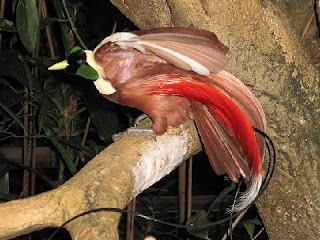Introduction
Anthurium (Anthurium andreanum Lind.) belongs to the family Araceae. There are two types of anthurium under cultivation: the foliage and the flowering types. The foliage is grown for their velvety leaves while the flowering type is for their showy flowers, which consists of spadix and spathe.
The true flowers are borne on a spike called spadix protruding from the base of the spathe.
The spathe is a modified leaf typically heart shape. It comes in different colors – pink, white, green white and red.
anthurium plowmani
Varieties
Cultivars grown locally are the following:
- Nitta (orange)
- Kaumana (red)
- Ozaki (dark pink)
- Kaonaiwan (white)
- Pink Exotica (light pink)
Other varieties introduced from Holland:
- Margaretha (white)
- Midori (green)
- Mauricia (dark pink)
- Claudia (red)
- Leigh (beige)
Cultural Management
- division or separation of suckers
- top cuttings
- tissue culture
Anthurium can be grown in raised bed or clay pots. Larger pots are used for larger varieties. Enough holes in the bottom or sides of the pots should be provided for efficient drainage. The size of beds depends on the growers but the ideal distance of planting should be 1 meter to accommodate nine mature plants per square meter.
anthurium Jemani
The selection of the growth medium depends on the availability, cost and ease of handling.
The most common media used are:
- coconut husks
- coir dust
- red or black cinder
The light requirement ranges from 60 – 75% shade. Three to four layers of net 10 feet above the plants should be installed.
The best temperature in growing anthurium ranges from 10 – 20°C (night temperature) and 27 – 30°C (day temperature).
The amount and frequency of watering depends on the prevailing climatic condition in the production area, medium and degree of shading. Anthurium needs water during all the stages of growth. It requires high relative humidity.
Both inorganic and organic fertilizers may be used in anthurium. Complete fertilizers such as 16-16-16, 30-10-10 and 10-20-30 at the rate of 1 tablespoon per gallon of water sprayed or drenched on the medium.
Anthurium are ready for harvest when the peduncle portion near the neck is already firm and ¼ to ¾ of the base spadix turns white.
- Classification of Flowers
Flowers are sold according to sizes of the spathe (length across the broadest part)
- extra large (10.0 cm and above)
- large (8.0 – 8.5 cm)
- medium (7.0 – 7.5 cm)
- small (6.0 – 6.5 cm)
- miniature (5.5 cm and below)
anthurium_Giant
Anthurium flowers are packed in plastic sleeves with stem ends insert in plastic tube with water. Flowers are also packed in boxes containing moistened shredded paper to prevent dehydration.










